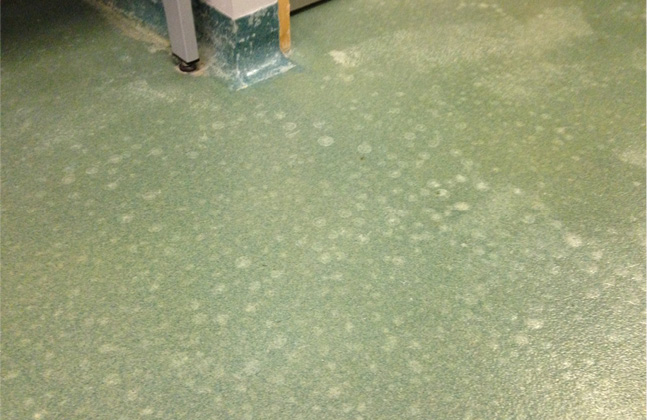Excessive moisture in concrete floor slabs and screeds is a significant problem for any development as it can lead to the following types of failure or damage:
- One of the worst problems is an adhesion failure between the floor covering and concrete slab. This occurs when the critical moisture level for a given covering / adhesive / concrete is passed, which will result in the bond strength dropping sharply.
- Dampness in concrete may aggravate alkali related dimensional changes in sheet vinyl – which basically means that vinyl floor coverings will move instead of remaining fixed.
- One potentially very problematic issue is that excessive moisture can lead to emissions of harmful substances from floor covering materials. Examples of this include the emission of ammonia from some screeds, the emission of formaldehyde from chipboard and the degradation of certain plasticisers in sheet vinyl.
- Solid wood floor coverings are at risk of moisture causing unwanted expansion while wood based floorboards can face significant degradation.
These problems tend to occur when the moisture content of the concrete or screed exceeds the critical moisture content of the materials that are in contact with it.
A material’s critical moisture content can be expressed as an Equilibrium Relative Humidity (ERH) value or a Moisture Content (%mc) value. ERH values are particularly suitable for this purpose because they convey the moisture condition of the material in question – essentially its degree of wetness. ERH values are obtained by measuring the %rh of a pocket of air in moisture equilibrium with the material under investigation. Whilst the critical moisture content values vary for different materials, the problems outlined above are avoided when substrates have an ERH below 75%.
To clarify, humidity denotes the presence of water vapour (the gaseous form of water) in air and other gases. The expression relative humidity (%rh) of air expresses the degree of saturation with water vapour at a given temperature. For example, saturated air has 100%rh and so contains its full capacity of water vapour.
Check back on the blog next week for the second post in this series that looks at one of the main ways to measure moisture levels in the floor.





